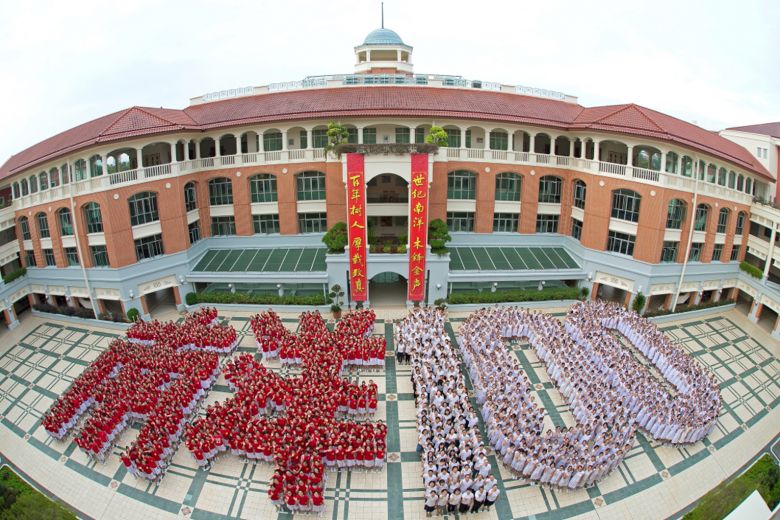From wading through flood waters to spot checks on hair lengths, these are things remembered fondly by alumni of the Nanyang schools – Nanyang Primary and Nanyang Girls’ High School.
The sense of nostalgia hit them hard over the weekend at an event to celebrate Nanyang’s 100th anniversary this year.
It all started in 1917 when Nanyang Girls’ School was founded by businessmen Tan Chor Lam and Teo Eng Hock, the great-granduncle of Deputy Prime Minister Teo Chee Hean, who wanted to give girls an education. It was open to both primary pupils and secondary students. In 1934, it opened a kindergarten branch and, in 1978, the primary school was separated from the secondary section.
Throughout its long history, it has produced an illustrious list of alumni, including Prime Minister Lee Hsien Loong and Singapore’s first female Olympian, Madam Tang Pui Wah, now 83.
The latter enrolled in Nanyang Primary in 1946 and completed her secondary education there in 1954.
The Olympian first discovered her skills in hurdles and jumping when she got bored waiting for the school bus in Nanyang Primary.
“I would set up my own makeshift hurdles and then keep adding more to make myself jump higher. I became quite an expert without knowing it,” she said.
However, her sporting interests clashed with her parents’ desire for her to fit in with the traditional image of women at the time.
“My parents didn’t like me to go out and do sports,” Madam Tang recalled. “My teachers had to go to my house… to reassure them that they would take care of me.”
Indeed, one of the most vivid memories for Madam Tang is how a teacher would always accompany her for sports meets in places like Malaysia. “All the other athletes knew me because I was the only one who had a teacher with me,” she said with a laugh. She went on to represent Singapore at the age of 19 in the 100m sprint and 80m hurdles at the 1952 Helsinki Olympic Games.
Besides teachers, the friendships forged in Nanyang during the girls’ formative years were also something the alumni never forgot.
Ms Tjioe Ka In, 52, chief operating officer of restaurant group Tung Lok, still stays in touch with her Primary 1 friends. She attended Nanyang from 1972 to 1982, through primary and secondary school.
An experience that the Nanyang family seems to share is that of uniform spot checks, especially when the girls had to keep short hair.
“Our hair could only be an inch below the earlobe,” Ms Tjioe recalled.
While this seems strict today, Ms Ang Fung Fung, chairman of Nanyang Girls’ board of directors, said short hair was a form of liberation. “It actually represented us being free from constraints,” said the 47-year-old audit partner, who attended Nanyang from 1982 to 1985.
She remembers wading through flood waters up to her knees to get to school in the rain. “Our uniforms got soaked and became translucent, but it’s a girls’ school so it was okay,” she added with a laugh.
One old girl who has been both student and educator in Nanyang is its principal, Madam Heng Boey Hong, 51. She enrolled in the secondary school in 1979, returned to Nanyang Primary in 1999 as vice-principal and then principal, before joining the secondary school again in 2009 as principal.
Madam Heng, who was in the first batch of Special Assistance Plan students, credits Nanyang for her language skills and hopes to continue the school’s focus on bilingualism.
“I came from a kampung school where they spoke Teochew,” she said. “Only when I went to Nanyang did I realise there were girls who could speak English. That was where I built the foundation of knowing two languages well.”
As principal, Madam Heng still insists that the girls learn 10 classical Chinese poems a year, so that they will appreciate the culture.
She also emphasises the school motto of diligence, prudence, respectability and simplicity. After 22 years in Nanyang, the motto has become a part of who she is. “Some of my colleagues have teased that if you cut me open, my blood will spell ‘Nanyang’,” she quipped.
As for the next 100 years, Madam Heng hopes that Nanyang will continue to hold fond memories for future generations of girls. “I hope it will be a school where every girl who leaves can look back and be proud that they were part of it.”
Article & Photo from Straits Times


